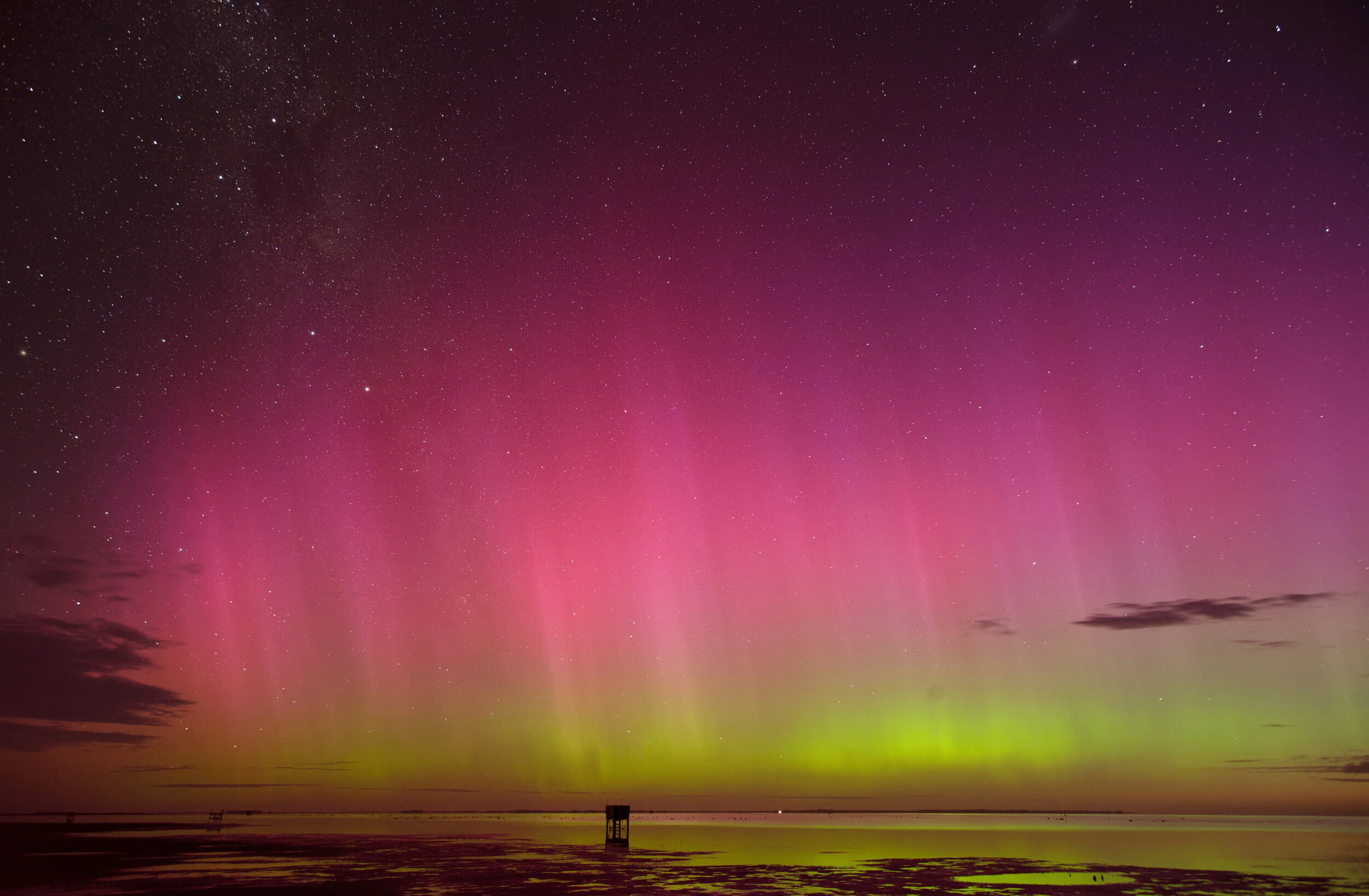One of the most beautiful parts of living near either of the global poles are the auroras. The stunning natural light shows, which are caused by solar winds creating disturbances in the magnetosphere, light up the skies of most planets and natural satellites in our solar system. On Earth, when people speak of the auroras, they most commonly are referring to the aurora borealis, or the northern lights. While the northern polar regions are more populous than those in the south, the northern lights’ counterpart, the aurora australis, provides an equally immaculate light show.
Commonly viewed throughout high southern latitudes in Antarctica, Argentina, Chile, Australia and New Zealand, the aurora australis changes colors depending on the altitude and chemistry of the disturbances caused by solar winds. The signature green color most commonly associated with auroras occurs when particles carried by solar winds collide with oxygen molecules at lower altitudes. However, other colors like red only occur at higher altitudes.
The aurora australis, as seen over the Indian Ocean from space. NASA Johnson. CC BY-NC-ND 2.0.
In general, auroras of all types occur during their respective hemisphere’s winter. The northern lights commonly occurs from December through April, while the aurora australis generally appears from March through September. However, there is no guarantee that the lights will be visible even in the most optimal conditions given the variability of the colors which form and the light pollution in more populated viewing areas. The closer one is to a magnetic pole, however, the better the chance they have of viewing the natural light show.
While the aurora australis may be a bit more difficult to view than its northern counterpart, there are several popular areas in the Southern Hemisphere commonly visited by travelers looking to experience auroras for themselves.
In South America, the most common region for viewing is Patagonia, which encompasses the southernmost tip of the continent and is shared by Chile and Argentina. The region is home to Punta Arenas, Chile, the largest city in the world below the 46th parallel, and a number of parks which are home to penguins, glaciers and fjords. Due to Patagonia’s low population, light pollution generally does not interfere with viewing the aurora australis.
The aurora australis viewed over Hobart, Tasmania. Andrew Wallace. CC BY-NC-ND 2.0.
Off the coast of South America are the Falkland Islands and South Georgia Island. Both British Overseas Territories, these two areas are perfect for viewing the aurora australis given their respective sub-Antarctic and polar climates along with low populations. Visitors to these islands can also get up close and personal with penguins, and get a taste of the Antarctic climate.
In the Eastern Hemisphere, two islands in Oceania are most commonly associated with the aurora australis. The most populous of the two, the Australian island of Tasmania, is a popular tourist destination outside of being an optimal viewing point for the aurora australis. The island, which is home to a variety of unique flora and fauna unseen anywhere else in the world, is a popular destination for Australians living on the mainland. Here, the aurora australis is best viewed in the island’s southernmost regions like Southwest National Park and Bruny Island.
Further to the east is Stewart Island, the third-largest island in New Zealand. Located in the far south of the country, the island is such a common viewing point for the aurora australis that its native Maori name, Rakiura, translates to “the land of glowing skies.” Given how remote the island is and how few people live there, simply being on the island is the best optimal viewing point for the natural light show.
The aurora australis provides a truly once-in-a-lifetime experience which is best enjoyed in person rather than via video or imagery. The dazzling colors have struck awe into the hearts of folks for generations, and will continue to do so for generations to come.
Jacob Sutherland
Jacob is a recent graduate from the University of California San Diego where he majored in Political Science and minored in Spanish Language Studies. He previously served as the News Editor for The UCSD Guardian, and hopes to shed light on social justice issues in his work.




